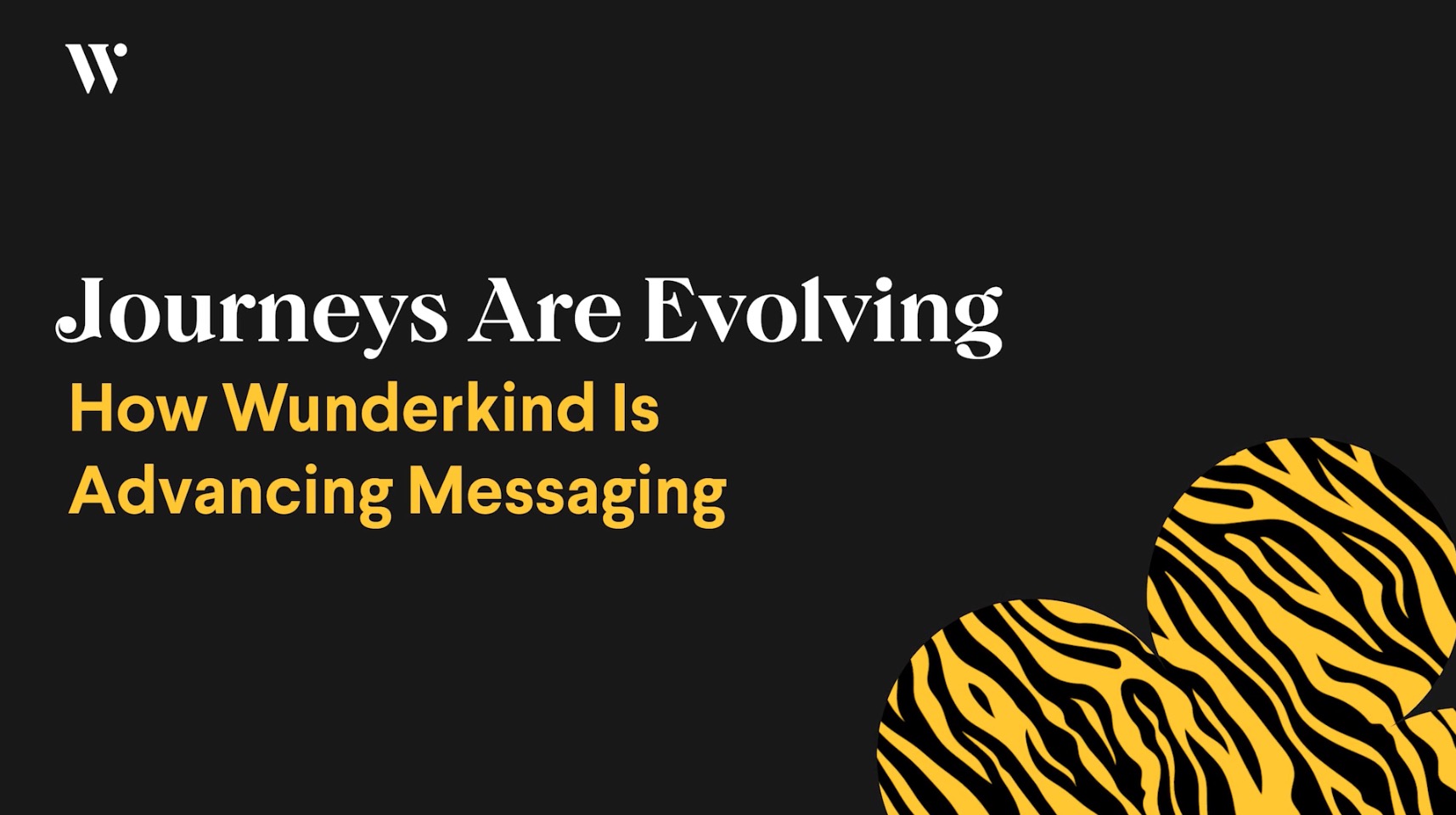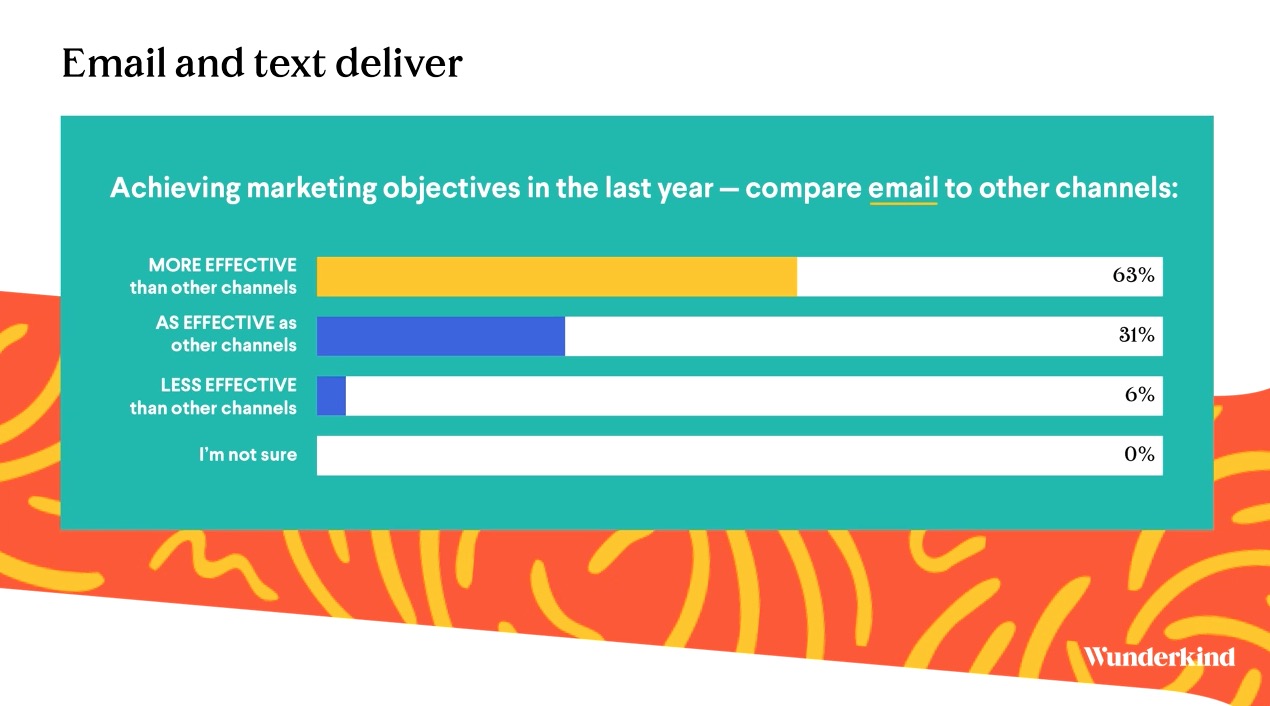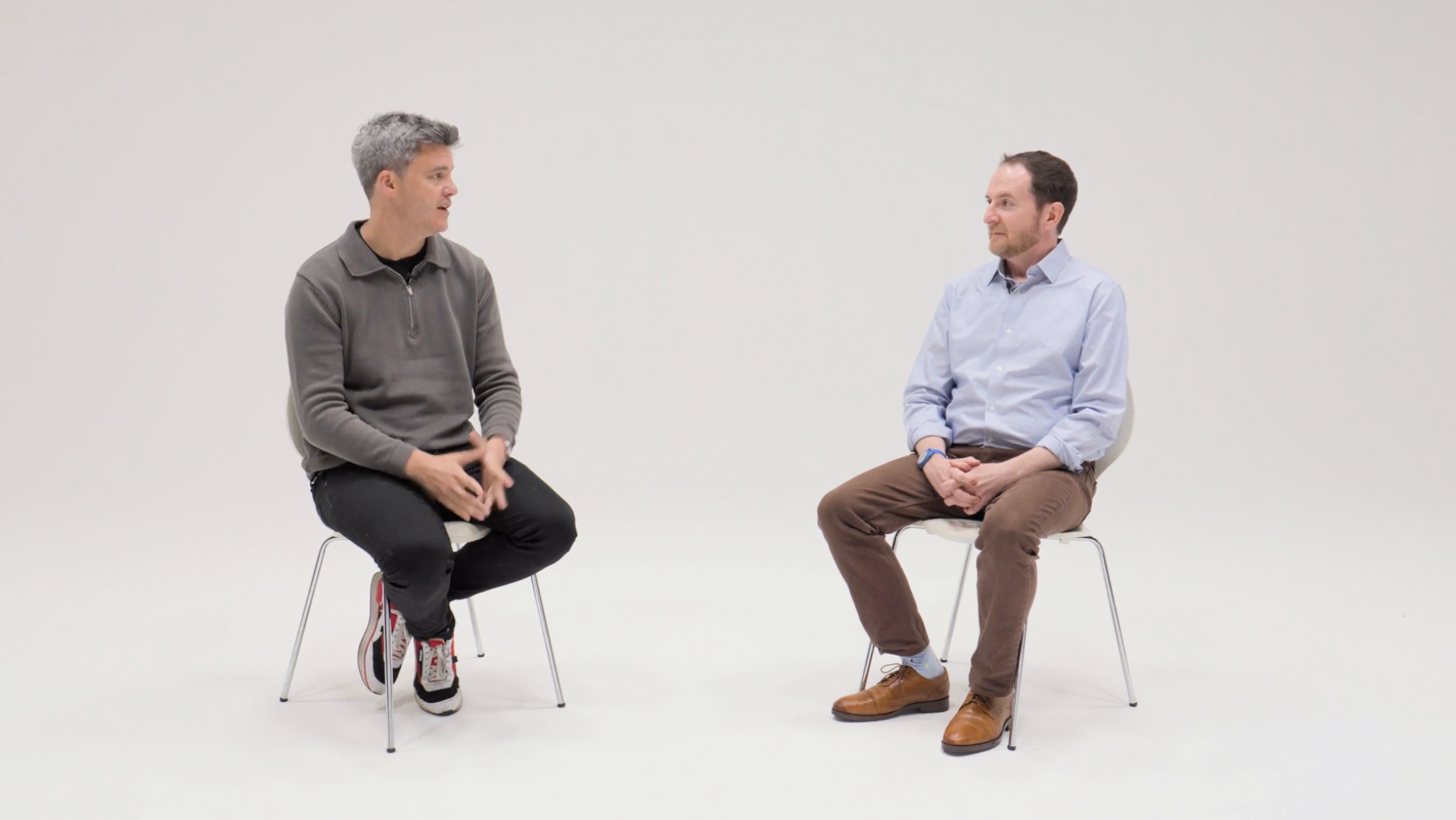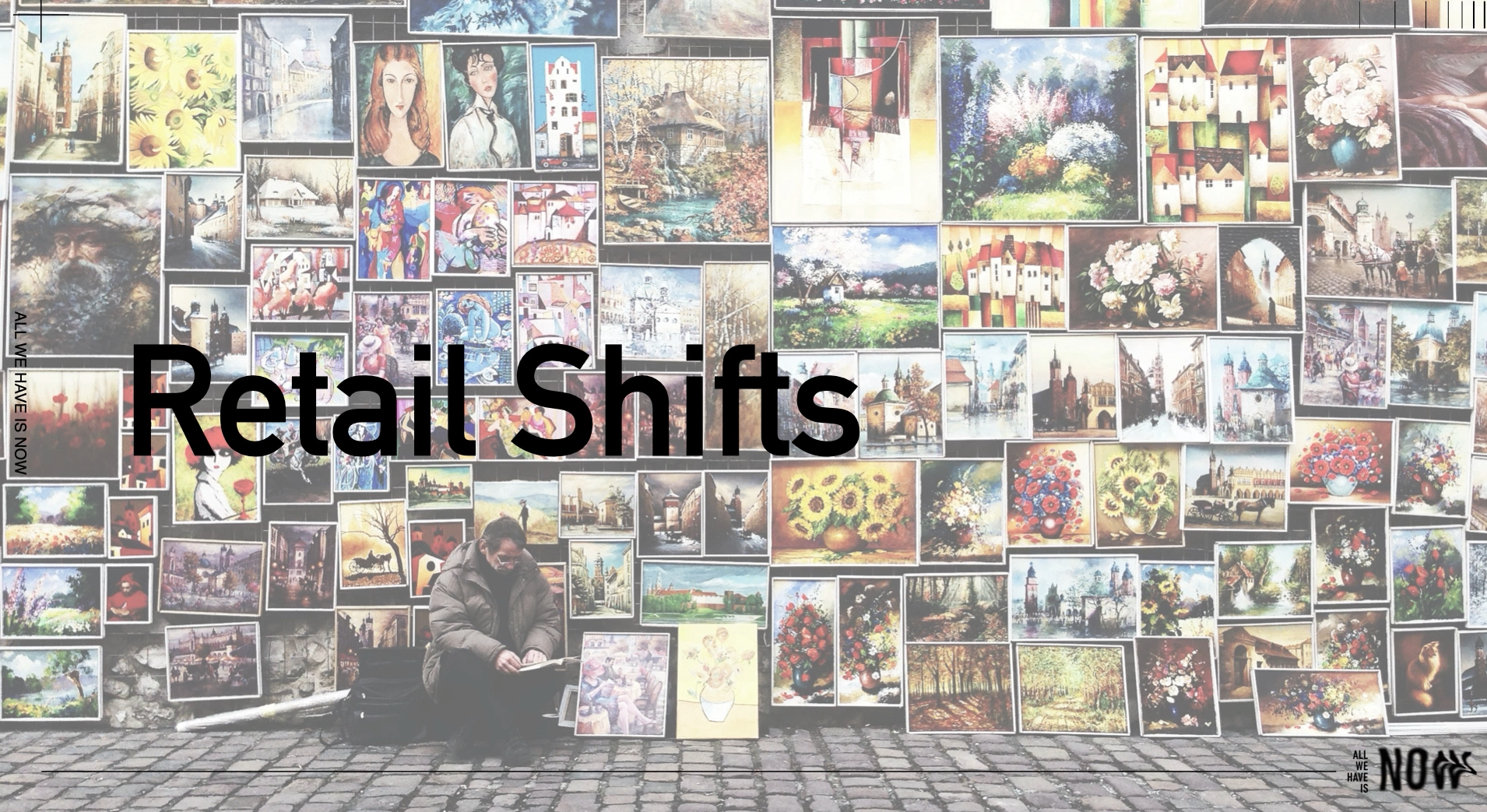Key Consumer Signals From BFCM That Will Drive Performance Revenue All Year Long
- 0.5
- 1
- 1.25
- 1.5
- 1.75
- 2
Tim Glomb: Welcome everybody to our webinar, Breaking Down 2023's BFCM, Black Friday Cyber Monday. These are the key consumer signals from BFCM that will drive performance for you all year long. I'm Tim Glomb. I will be your host today and moderator. Move us along. I'm the VP of content, digital and AI here at Wunderkind, but I am joined by two of the smartest guys here at Wunderkind. Number one, we have David Freund, who's the AVP of performance and product strategy here, as well as Scott Schaen who's our VP of data and analytics. David, Scott, how are you guys doing today?
David Freund: Doing well.
Scott Schaen: Yeah, doing great. Excited to talk BFCM.
Tim Glomb: Yeah, you guys are experts. You do this day in, day out, you're constantly looking at our analytics for hundreds of customers and our giant data graph, but I want to set this up first. I'm going to ask you guys, I'm going to put you on the spot. Why are we qualified to even talk about BFCM to marketers that are listening right now? What does Wunderkind do? What kind of data do we see? What kind of identity graph? Give me some big stats that kind of show, we can talk about this intelligently.
Scott Schaen: Yeah, absolutely. BFCM is a big deal at Wunderkind. It's something we spend we probably start at midyear, getting clients ready, getting strategies ready, getting services ready, but we track a ton of data and then we do everything we can to really understand that data at a user level. So we track something like 50, over 50 billion events during that whole BFCM week. We're sending tens of millions of emails per day and text messages per day. We're tracking a lot of data, but we also have the tools and the know- how and the right people to actually comb through it and understand the insights and really the fascinating user behavior and how it changes during BFCM.
Tim Glomb: Got it. All right. Well let's talk BFCM. Was this year different than any previous years? What do the trends tell you?
Scott Schaen: Yeah, so it's kind of a funny question to ask. This year actually was not that much different than last year in a bunch of ways. I think the pivotal year was 2020. That kind of changed the shape of BFCM. BFCM used to be really back heavy. The revenue was shifted towards Cyber Monday and less at the beginning of the week, after all Black Friday was an in- store retailer holiday. But BFCM, or sorry, but 2020 with the pandemic really shifted consumer behavior and consumer mindset where everyone realized two things I think. One, Black Friday is also an e- commerce holiday, and two, the deals maybe are not getting that much better as the week goes on. And so since 2020 we started to see this shift to pull forward BFCM, a lot more of the revenues happening earlier in the week, and that actually hasn't changed at all since last year. Additionally, for years we've watched mobile grow, mobile phones versus desktops and laptops and every single year mobile was taking over more and accounting for more and more revenue during BFCM, but also other points of the year. And that's also started to really slow. Across all of our clients mobile accounts for a little over half of digital revenue, much different behavior on mobile than desktop, and it's pretty interesting in itself, but we don't think desktop's going anywhere, at least now for the next few years. Desktop and laptops are still going to drive a lot of purchases and browsing, so by and large, it was actually somewhat of a predictable BFCM.
Tim Glomb: Predictable BFCM. Okay, cool. Well, going into it, obviously we make recommendations to our clients. We have hundreds of retail e- commerce across a number of different industries, hundreds of clients. What were we prepping them for going into BFCM this year?
David Freund: Yeah, so like Scott said, we prepare early for BFCMs, so we had a lot of different recommendations for our customers. A few of the most important ones. First, this is probably pretty obvious, start thinking about this early, start planning your offers early and start launching some of that messaging early. Consumers are expecting BFCM to be earlier and earlier, so at the very least you should be making sure you're messaging that earlier in cyber week. And honestly, you probably should be considering some sort of sale messaging or some sort of early access to your sale earlier in the month. One thing we recommended to many of our customers was if they were going to be running something earlier in the month to actually have it gated with own channel opt in, so it's only for email and tech subscribers and make that a really exclusive event for your most loyal customers. Also, just knowing that we know there are some folks who are going to try to wait until the end of the sale and making sure that you have messaging prepped to leverage that. While you want to start early there are going to be those stragglers and what's really going to motivate those folks is urgency. So taking advantage towards the end of the day, whether that's Black Friday and especially as you get later in cyber weekend, like on Monday, making sure that you're using those reminders to leverage closing deals towards the end of the weekend.
Scott Schaen: Yeah, I'm going to piggyback on that. Just going back to predictability is urgency has always worked for Black Friday Cyber Monday, and that's partly why Cyber Monday is so big is because everyone expects that's the day that it ends. Cyber Monday is my last chance to get this purchase in, but the other interesting thing that we see with urgency is every single day of BFCM, including that Saturday, including that Sunday is right around midnight, there's a surge in purchases and that's for all the clients that make it really clear that whatever today's offer is, ends today. So you can really lean into urgency and I think also try to have something special every day so it is understood that tomorrow this same exact offer won't exist.
Tim Glomb: Scott, let me ask it. I'm going to ask you a question about that because you and I in real time while this was happening, we were looking at graphs. You literally can see minute by minute conversions for our customers of what's actually happening, and you literally were seeing giant spikes at 11:59 PM across the time zones here in America, correct?
Scott Schaen: That's right. Yeah. So it's really fascinating to look at because we'll see a big minutely spike at 11: 59 PM out on the East Coast. I also then see that same minutely spike at 1: 59, 2: 59, well all three times zones of the US.
Tim Glomb: Yeah, that's crazy. And you talk about urgency, so that's somebody that's probably a brand saying, hey, look, this ends tonight or get it today only, et cetera. It's Black Friday at Cyber Monday. That's the point, midnight it's over. Do you think that's a recommendation brands should be taking all year in their mini BFCMs, whether it's back to school or summer break or things like that?
David Freund: They really should. Really you can think of all these other kind of mini sales or other big moments, whether they're launches, whether they're sales throughout the rest of the year. That's sort of your testing environment for the big points of your year. So if the biggest time of year is holiday, think about back to school, think about Valentine's Day, Father's Day, Mother's Day as those opportunities for you to test what you want to work over the holidays. So what types of urgency work best for your customers? Is it scarcity around item selling out that tends to motivate folks the most and highlight that? Is it urgency around the offer ending? There's a lot of different types of approaches you can take with how you're emphasizing that urgency or scarcity or frankly which channels you want to use to do it and when.
Scott Schaen: Yeah, one more thing to say about urgency for BFCM and especially Cyber Monday is you don't want your customers to think that they should wait until Cyber Monday to purchase. And so you want to try to lock in as many purchases early in the week as possible because once you get to Cyber Monday, if they don't like that offer, then you've kind of missed out on revenue. So the additional day- over- day urgency I think helps to lock in those orders earlier on.
Tim Glomb: Got it. And you saw similar urgency with shipping deadlines, right. So BFCM, you saw those deadlines at midnight, but shipping deadlines were the next urgency matter for the holiday, correct?
Scott Schaen: Yeah. This is another predictable trend that we see across the board is you always have this big spike for Black Friday and Cyber Monday. It dips back down, but not to normal levels because we still have the holidays. People are definitely buying. I personally think BFCM is still more for me and less for presents for friends and family, and I think post BFCM is where you start to see a lot more of that, those one- off purchases and those gift purchases. And so we see we dip down post BFCM and then we ramp up until, it's usually about December, I think December 18th or so, December 19th as shipping deadlines start to kick in and then purchases die down to Christmas, which is one of the lowest purchasing days of the year.
Tim Glomb: Yeah, that makes total sense. Let's go to the front end of BFCM. When does BFCM start? I feel like for the last few years it started earlier and earlier and earlier. When do you start to see it and what are some of the halo effects that brands should be thinking about like acquisition? Is this a time to acquire? Is this a time to start looking at data?
Scott Schaen: Yes. Okay. That's a big question. There's a lot of ways to answer it. BFCM in a lot of ways starts the day after Halloween. Once you're in November something clicks and consumers are in buying mode. Everyone knows that November means it's time to buy, deals are better. And so I think the interesting psychology around BFCM and all of November and all of the holidays is people are naturally converting in higher levels, they're browsing more, they're adding to cart more, they're showing much more intent. And so I think one half of it is on the brand and the offers and all of the marketing. The other half of it is consumers have already come to terms with, I'm going to buy, I have stuff to buy. This might be my one time of year that I stock up on my own items. So two answers. I think that holiday ramp up starts November 1st and then BFCM, and this also hasn't really changed, always kicks off that Monday before Thanksgiving.
Tim Glomb: Okay. What were you seeing brands when it came to acquisition? I know when this was happening in real time, you start to see a lift in actual opt ins and marketing opt ins. What do you think is behind that?
David Freund: Yeah, so a lot of folks are starting to browse far more often. Starting again, like Scott mentioned, just after Halloween, and that's an ample time for opt in. So one, we know that people are expecting, anticipating the deals, so they want to make sure they're notified immediately when they happen. This is the one time of year where people are excited to get your emails and all of your marketing, so this is the best time to acquire. A lot of our brands, and we recommend this for a lot of our brands are also tailoring a lot of their acquisition messaging to make sure that folks are signing up not just for an incentive, but to make sure that they're first on the list to get access to those early sales. Another thing a lot of brands are leveraging, which helps with the opt ins quite a bit, is actually offering exclusive or even early access to some of those sales. Maybe it's exclusive to tech subscribers, maybe it's just email subscribers get it an hour early. For a lot of brands, especially those that sell through inventory very quickly, that can be a really compelling way to build your list.
Tim Glomb: Well, Scott, I know people here are chomping at the bit to see some stats and figures. You're the VP of analytics, you deal in numbers all day long, but maybe you could show us some stats of what actually happened through the week. When did it start? When did it end? What are some of those spikes that you saw?
Scott Schaen: Yep. So BFCM Week really starts that Monday, and it usually ends around Tuesday the day after a Cyber Monday. And the interesting thing is in the beginning of the week, you have people who are in browsing mode and we see that category page views really spike. People are in discovery mode. They're trying to see what's out there. They're doing their research, they're visiting more frequently. Come Thanksgiving, you actually have one of the highest AOV days of that whole period. People are most likely to spend the most on Thanksgiving, and then it kind of dwindles down where Cyber Monday is one of the lower AOV days of the week. And not only AOV, we also see that people are buying less items as the week goes on. BFCM is also heightened, so that week is usually a little higher than other weeks, but worth knowing because it kind of goes back to urgency. As the week goes on people have less time, they feel the pressure and they feel like they need to lock in those deals and they need to lock in those purchases. So again, a great time to really go all out in the beginning of the week so that people have the time to do all the browsing and hit those category pages.
Tim Glomb: Yeah, that makes sense. Can you talk about, because look, we generated over$ 3 billion for our clients in this period alone. Can you talk a little bit, you mentioned category browsing, et cetera. What are some of the modules our clients are using in a triggered fashion to get these AOVs up, to get these conversions going?
Scott Schaen: Yes, and David, feel free to jump in. So BFCM, we know conversion rate spikes. People are way more likely to purchase during this week. They're actually actually twice as likely, and your website might be a little bit different, but what we see by and large is conversion rate doubles. Now, when conversion rate doubles, I think it's safe to assume abandonment rate probably goes down. But the reality is abandonment rate goes up as well. You have a chunk of traffic, your unproductive traffic, your bouncers, that's the cohort that's actually down. You have less unproductive traffic. And so what you have is this cohort of people who are coming to your site who are browsing products, browsing categories, but leaving. This is where your abandonment modules, your triggered emails, your triggered text messages, play such a critical role during BFCM to getting people back to the site. And of course, you're also sending all your own promotional emails and text messages, but the thing that is so effective with abandonment is it's hitting them with the exact products that they're interested in, the exact categories that they're interested in, and it drives them deeper into the funnel by taking them right back to that page or maybe even rebuilding their cart. So pretty critical strategy. The other thing that you have to love about triggered and abandonment is it's working for you. You don't have to think about it. It's just set it and forget it. And so highly effective and just critical during this time when there's so much distraction and there's so much going on, so much competition.
Tim Glomb: Yeah, that makes total sense. Let me ask you about ID though, because that's a huge factor for brands that are getting a deluge of visitors to their site. I'd love for you to explain how many net new and how many returning visitors, but if you can't identify these devices and people coming to your site, they're a black box. You have to reach in and use a third party cookie, which by the way is going away this year. I'm not even going to get into it, but if you're still using remarketing through paid channels in 2024, get ready for this influx of political ad spend that's going to make ad scarcity a thing and your ads are going to increase in costs. But talk to us a little bit about that. How is ID powering some of this intelligence for Wunderkind clients?
Scott Schaen: Yeah, without ID, you can't send an email, you can't send a text message and without ID that persists to some extent you can't tie that identification back to an item view or a category view or a previous purchase. And so you do want to make sure that your identification is up to stuff ahead of BFCM, that you're identifying users through whatever means you possibly can, but the great thing about BFCM is users are so much higher intent. Like I said earlier, you have less unproductive traffic, and so you have more people clicking through emails, clicking through text messages, opting in, starting the checkout flow by typing in their email, and so identifications that usually an all time high, which makes it really easy to send more abandonment emails and abandonment text messages. So without solid identification, you're not going to have a good abandonment program.
David Freund: But what it means is that if abandonment is so high, the opportunity cost of not having strong identification over the holidays is huge. There are so many more cart abandoners than there ever would be. So if you don't have your identification set up when they're doing those browsing the week before, the two weeks before, three weeks before, after Halloween, you're going to be in trouble, come Black Friday Cyber Monday because not everyone has to identify themselves on that day. You want to make sure that's in a robust position well before the week itself.
Tim Glomb: Yeah, and to that point, I mean, David, you talked to all of our clients, right? You're telling them what they should be doing. Okay, BFCM is behind us. It's in the past. Thanks for the stats and everything. What should brands be doing going forward? How should they and when should they be prepping for BFCM 2024 and frankly, their own little BFCMs, their back to schools, their Valentine's Day for if you're in the jewelry business or the chocolate business. So David, what are you recommending people do and what are the check boxes they should be thinking of?
David Freund: Yeah, so first thing, you want to make sure that your marketing strategy is always on because everything that you're doing the rest of the year is building for BFCM or building for some of those smaller moments we talked about like back to school, et cetera. That includes making sure that you have the best opt in program possible, that you're maximizing opt ins from all of your own channels in particular like your emails and phone numbers. You also want to look at everyone who's made a purchase over BFCM, especially those who are the first, it's the first time they've been a customer, and make sure that you're thinking about what that person's user journey is. Scott can talk about this, but we know a lot of folks are buying for the first time over BFCM, which is not something that a lot of folks, I think think about. People think about as way to engage your loyal customers, but it's a lot of user acquisition and you want to make sure that those users have a really strong journey and you don't have to wait another year before a big sale to get them to convert again. Make sure you're thinking about what that looks like. Also, again, the rest of the year is your testing ground. If you're thinking about what messaging should I be using? What's going to be the best incentive I should be using? Do I want to try and use incentives to raise AOB for instance by putting order minimums on it? All this sort of stuff you want to learn about your audience and what they respond to. The time to test it is back to school. It's Valentine's Day, it's July 4th. These kind of mini moments where the cost of failure is a little bit lower, you can get some good wins, and then also you can start to leverage that when it really matters come holiday season next year.
Scott Schaen: To sprinkle in a quick data point, we're able to look at all of the revenue that happened during BFCM and we were able to tie 34% of it back to a Wunderkind email opt in, which just shows you the power of email opt ins, and that opt in may have happened a few weeks prior, may have happened a few years prior, which is why you really need to emphasize the value of opt ins. It's not just email, but text as well.
David Freund: One of the thing we've been considering and really strongly recommending marketers consider for 2024, this goes back to what you mentioned about retargeting ads and ad spend in general getting more expensive. We know CPMs on Facebook and TikTok and Instagram with all the political campaigns are going to go crazy, especially the back half of next year. One area you might be able to consider getting some of the same performance, but at lower CPMs is thinking about texts as an alternative. Your text messages are certainly more expensive to send than emails, but they're often a lot cheaper than what you might be spending on other ads, and the viewability is always quite good. There's a lot of different studies on it, but typically we see at least 90 plus percent of folks are opening their text messages. If you want to make sure someone sees your message, even if it's not something you want someone to click through right away, try sending an MMS. People will engage with that image, and that's a great way to get in someone's feed and get in someone's mind and maybe even set up a future conversion. So that's one thing that we're recommending a lot of marketers consider, especially in the back half of next year.
Tim Glomb: All right, well look, BFCM, we all know it's this giant revenue event at the end of the year for almost all brands. Is BFCM really just an end of year revenue spike or is it more than?
Scott Schaen: Yeah, it's a great question, and David got to this a little bit with user acquisition, but no, BFCM is bigger than BFCM. It's much more than that week. It's much more than November and December because you have acquisition at an all time high, we saw about half of purchases during BFCM were from the first time purchasers. You're not building relationships with a lot of new users, a lot of new customers, and some of those people might be in a holiday cadence and they'll be back around next year. Some of those users are going to be purchasing all year. So when you think about BFCM and you think about the incentive, you also really need to consider the lifetime value of that customer.
David Freund: It's also a massive time when you have a lot of engagement on your website, people are showing you what products they're interested in. There's a lot of opportunity for you later down the line to take advantage of that. A lot of those items that people looked at, maybe they're going to drop in price again later as the season ends. Maybe they're going to go low in stock or actually get restocked after being out stock. That interest that people generate over BFCM can absolutely fuel your program throughout the rest of the year, especially if you have the right triggers set up.
Scott Schaen: Right, which is something that we do exceptionally well. And again, one of those things that marketers shouldn't have to think about it because it's on autopilot. That would be our catalog modules, and so the beauty of marketing automation right there.
Tim Glomb: Yeah, so I think what you're saying is find a partner like Wunderkind when BFCM comes around, because you're going to have this giant organic influx of traffic. You're going to be able to identify more with a partner like Wunderkind. You're going to be able to build those relationships all year long, so get the intelligence in before BFCM so that you're taking full advantage of everything that happens during the holiday. We're almost at the end of our webinar time. What do we want to close out here with? Do you have any closing thoughts or other stats or other ideas you want to share?
Scott Schaen: I have one final thought as the data guy here. I would recommend using this time to really dig into the BFCM stats, but not in a superficial level, at a user level, understanding what percentage of purchases were from first time purchasers, what types of things did they buy. Of your repeat purchasers, when was the last time they placed an order? What we saw was repeat purchasers, 50% of them haven't purchased since last year, meaning there's actually a fair amount of people that just buy during the holiday period and that's their cadence, and so how do you market differently to them throughout the year? So really take a close look at user level data and try to test, test, test and tweak your promotional calendar. Sorry, tweak your promotional strategy and see what it takes to get holiday purchasers more interested throughout the year.
Tim Glomb: Cool. And David, any closing thoughts? Anything for our clients that are watching here that haven't talked to you in the last week or so?
David Freund: First, make sure that if you don't have your opt in strategy and your identification strategy in place, that's the most important thing that'll benefit you in the holidays, but that'll benefit you earlier. And the second, make sure all the easy things are done. Automation, triggers, all the stuff that you know is going to work and be personalized. I would prioritize that first and then start to think about all the one too many blast strategies that you want to employ coming into the next sales of the year.
Tim Glomb: Thank you so much. You guys are our stats and strategic performance gurus. I appreciate you putting this together. I appreciate everybody watching today too. And look, give us a call. Check us out, Wunderkind. We are a giant identity graph with 9 billion devices tracked, nearly a billion consumers opted in and over 2 trillion interactions on digital Webosphere tracked every year. So we've got a lot of solutions for you. We also have great case studies. I implore you. Please go watch the Kurt Geiger just launched here at the beginning of February. It's a great story of somebody who tried to build their own technology replicating what Wunderkind does, and you'll see how it turns out if you go watch it. Thanks again. We'll see you all the next webinar. Wunderkind. co. Thanks again.
DESCRIPTION
With 2023's Black Friday and Cyber Monday behind us, what key consumer signals did we see and how can they inform an always-on performance marketing strategy? In this session we will look at ecommerce data from millions of consumer events across hundreds of brands and reveal some key behaviors that marketers can latch onto to drive revenue year round.Wunderkind's Scott Schaen, VP Data and Analytics, along with David Freund, AVP Performance and Product Strategy, will bring to life data visuals and key insights so you can understand how to adapt a winning strategy for 2024. What you'll learn:
- How impactful were promotional deadlines on driving sales
- When consumers are most likely to opt-in for marketing messaging
- When to consider activating holiday and seasonal offers
- Why email and sms are the most engaging channels for ecom
- How an identity partner boost your existing efforts
Today's Guests

Scott Schaen








